The Holy Crown of Thorns was transferred to the Cathedral of Notre-Dame in Paris just after the French Revolution (1789-1799). On April 15, 2019, a terrible fire broke out in the Cathedral of Notre-Dame, destroying the giant spire that housed some of Christendom’s most sacred relics. By the Grace of God, Père Jean-Marc Fournier, Chaplain of the Paris Firefighters, went into the blaze with the firefighters to save the Blessed Sacrament and the Holy Crown of Thorns.
Holy Crown of Thorns
by Fra Angelico (1400-1455)
This crown, that was used by men to mock the Lord, was used by the Lord to show men what true kingship is all about – sacrifice. His love, displayed so vividly on the cross, appears even greater when we consider that He is the king who died for love of His subjects. This crown of scorn, then, became a crown of glory for the King of Glory. And thanks to the blood of Christ, some of which was shed by this glorious crown, the gates of heaven have been opened, and we can join the Eternal King, where He reigns from His throne, crowned in glory.
Almighty God, we, who on earth, recall the passion of our Lord Jesus Christ by honoring his crown of thorns, beseech you that we may be worthy to be crowned with glory and honor in heaven, by him; who lives and reigns with you. Amen.
After Jesus’ death, Jews and Gentiles alike concealed the venerated relics from Christian devotion. The Jewish custom was to bury whatever had been used at the execution near the body of the criminal, and they had done this regarding Jesus on Calvary. Additionally they heaped a large amount of stones and earth on the spot.
Roman Emperor Hadrian (who reigned from 117-138 AD) erected a temple in honor of Venus near the spot on Calvary, in hopes that those who came to adore our Lord, might appear to worship, in the marble idol, the false and degrading goddess of Paganism.
Constantine the Great . . .
Constantine the Great was Roman Emperor from 306 to 337 AD. His mother, Saint Helena, was Greek.
Constantine was the first emperor to stop the persecution of Christians (which ended in 324 AD) and to legalize Christianity along with all other religions and cults in the Roman Empire.
Throughout his rule, Constantine supported the Church financially, built basilicas, granted privileges to clergy (e.g. exemption from certain taxes), promoted Christians to high office and returned property confiscated during the Diocletianic persecution. His famous building projects include the Church of the Holy Sepulchre, and Old Saint Peter’s Basilica.
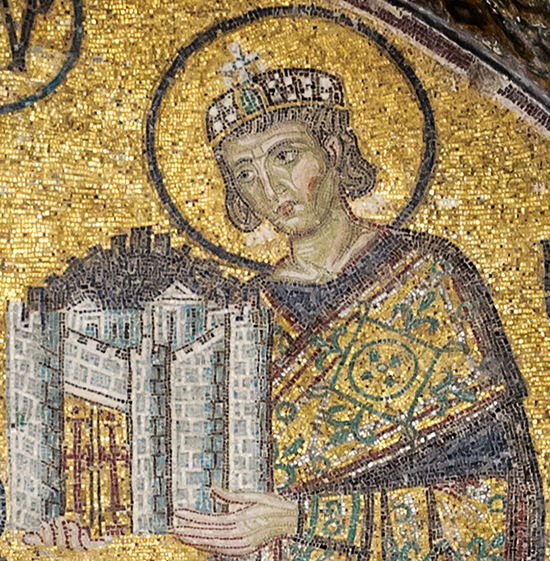 Constantine the Great, mosaic in Hagia Sophia, c. 1000
Constantine the Great, mosaic in Hagia Sophia, c. 1000
.
. . . and his mother Saint Helena
The Holy Crown of Thorns came into Helena’s possession in 326 AD.
Helena, mother of Constantine, traveled from Constantinople to Jerusalem in the Spring of the year 326. She was 80 years old. She set out to find the Cross of Jesus and anything connected to His Passion. The principal purpose of her pious pilgrimage was to find out the place of our Lord’s Sepulcher with His Cross and the instruments of His Passion and then build on that spot a magnificent church for the worship of the true living God and of His Incarnate Son.
After her arrival in Jerusalem, Helena found the Sepulcher of our Lord profaned by the temple and statue of the impure Venus. She gave orders for their immediate demolition and destruction. Under her direction the heap of stones and earth was removed and a large and deep hole was dug until the sacred instruments of our Savior’s Passion were unearthed. The day of discovery was May 3rd. Among the relics was the Holy Crown of Thorns!
In 330 AD Helena and Constantine began the construction of the first Byzantine church built on the site. The church was burned by Persians in 614 AD, restored and then totally destroyed again by the Muslims in 1009 AD. The Crusaders rebuilt it after 1100 AD, completed it in 1149 AD and much of it still stands today. When Constantine converted the empire to Christianity, he had the pagan temples dismantled, the earth removed and a church built over the spot.
The Jewish historian Eusebius (263-339 AD) also attributes the construction of the Church of the Nativity in Bethlehem (Christ’s birth) and the Church of Eleona (Christ’s ascension) on the Mount of Olives to Helena. Helena enriched the churches she built with portions of the sacred relics of our Lord’s Passion.
Some others she sent to Rome, and the remainder she took with her to Constantinople, which included the Holy Crown of Thorns which she highly valued and deeply venerated. Out of respect for the Chair of Saint Peter, Helena sent two thorns of the sacred crown to the Pope Sylvester I in Rome.
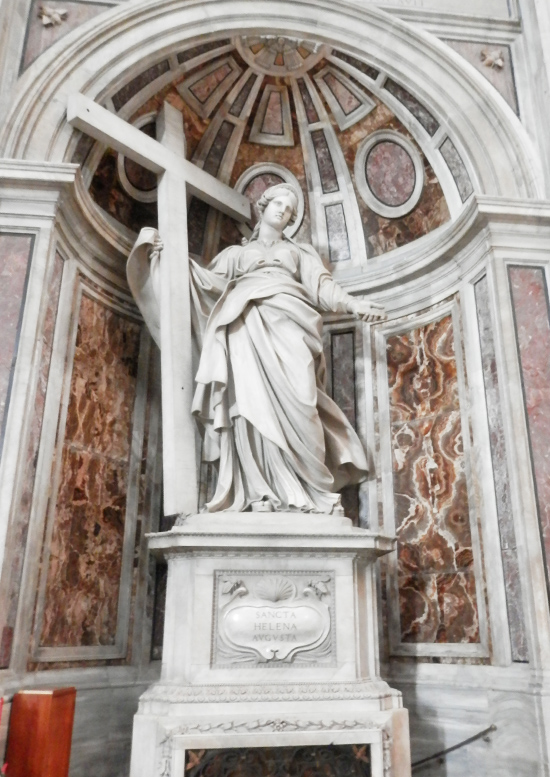 Statue of Saint Helena in Saint Peter’s Basilica in Rome represents one of the four most holy relics in Rome, a piece of the TRUE CROSS and HOLY NAILS. This larger-than-life statue is set in a niche within one of the four piers supporting the basilica’s dome.
Statue of Saint Helena in Saint Peter’s Basilica in Rome represents one of the four most holy relics in Rome, a piece of the TRUE CROSS and HOLY NAILS. This larger-than-life statue is set in a niche within one of the four piers supporting the basilica’s dome.
.
The Holy Crown of Thorns remained in Constantinople about nine hundred years. By 1216, the Latin Empire of Constantinople had declined and the Byzantine (Nycene) power advanced. Latin Emperor Baldwin II (1228-1273) governed little more than the city of Constantinople. His financial situation was desperate and he spent his time begging at European courts.
In 1237, Baldwin II pawned the Holy Crown of Thorns to a Venetian merchant in exchange for a substantial loan of 13,134 gold pieces. A number of years later when the loan expired, King Louis IX of France, urged by Baldwin II, bought the Holy Crown of Thorns. Two Dominican Fathers, James and Andrew went from Constantinople to Venice. From there the Holy Crown of Thorns was brought through Italy into France. This was August of the year 1239.
King Louis IX accompanied by his mother Blanche, his brother Robert of Artois, and many princes and prelates, went in procession to meet the sacred treasure fifteen miles beyond the ancient city of Sens. When they arrived at the appointed place, the holy king knelt before it in profound veneration, and the remainder of the numerous procession imitated his example. Dressed in sack cloth and in his bare feet, this most Christian monarch with his pious brother reverently took the sacred relic and returned in solemn procession to Sens; shedding tears of devotion through sentiments of religious gratitude to our Lord Jesus Christ, the King of kings.
.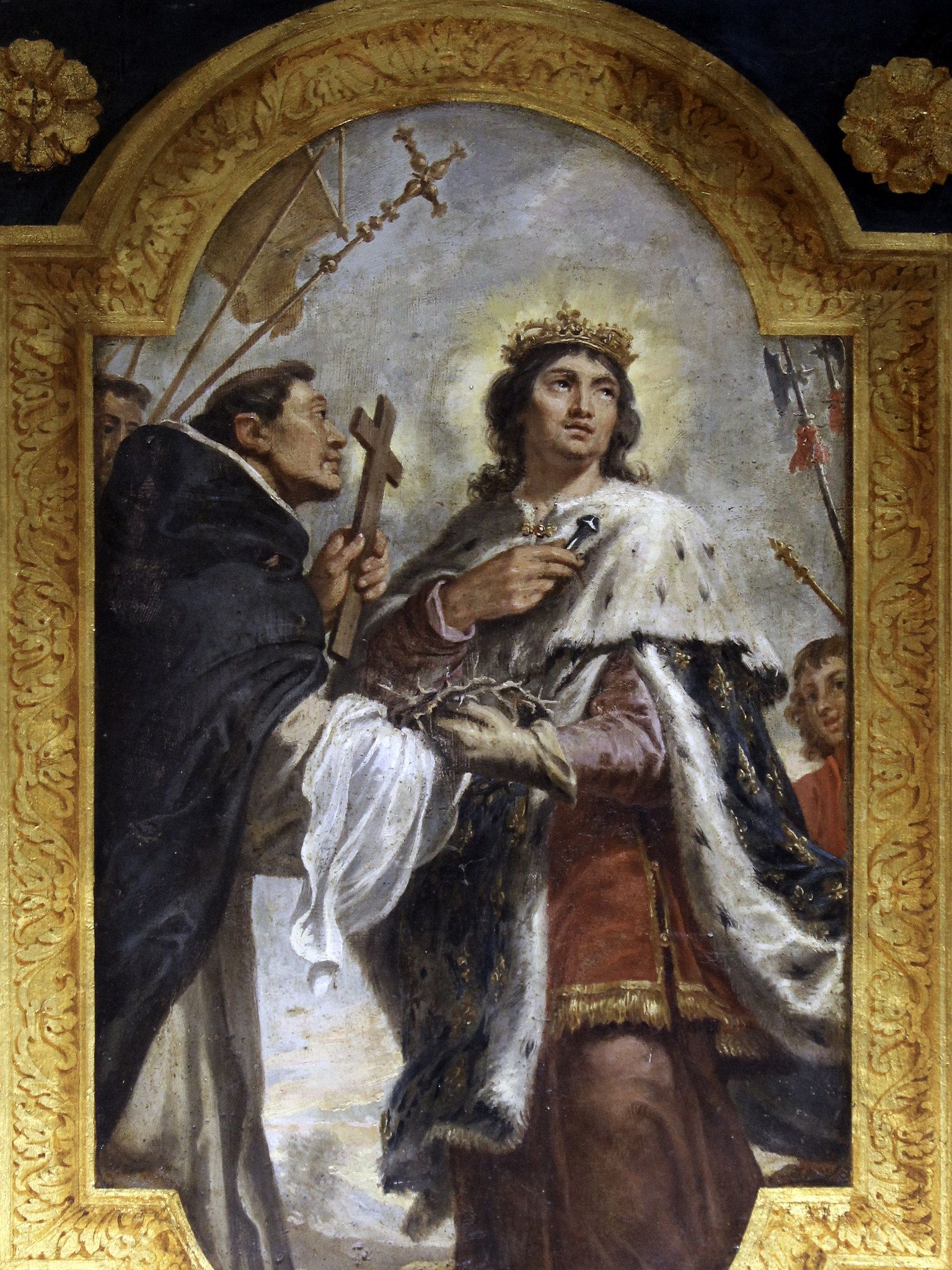 Saint Louis receives the Crown of Thorns
Saint Louis receives the Crown of Thorns
From Sens the Holy Crown was taken to Paris, where it was received with extraordinary solemnity and devotion. King Louis IX housed it in his palace before building a beautiful new church for its reception calling it the Holy Chapel or La Sainte Chapelle, completed and solemnly inaugurated in 1248. Some sacred thorns from this Holy Crown in Paris have been distributed to other churches. They are usually very long.
NOTE: It cost King Louis IX (Saint Louis) more to acquire the relics of the Passion that included the Holy Crown of Thorns than he spent on the construction of La Sainte-Chapelle to house them.
.
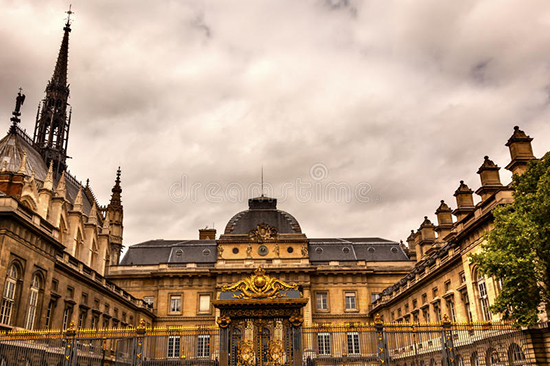 La Sainte-Chapelle on the left and King Louis IX palace in the center
La Sainte-Chapelle on the left and King Louis IX palace in the center
After the French Revolution, the Holy Crown of Thorns was transferred to the Cathedral of Notre-Dame de Paris. The reliquary containing the Holy Crown of Thorns can be seen in the Treasury at all times. The veneration of the Crown takes place on the first Friday of the month at 3 PM. The Crown remains in the sanctuary until everyone who wishes to see it has had an opportunity to do so.
 Notre Dame de Paris on the Île de la Cité
Notre Dame de Paris on the Île de la Cité
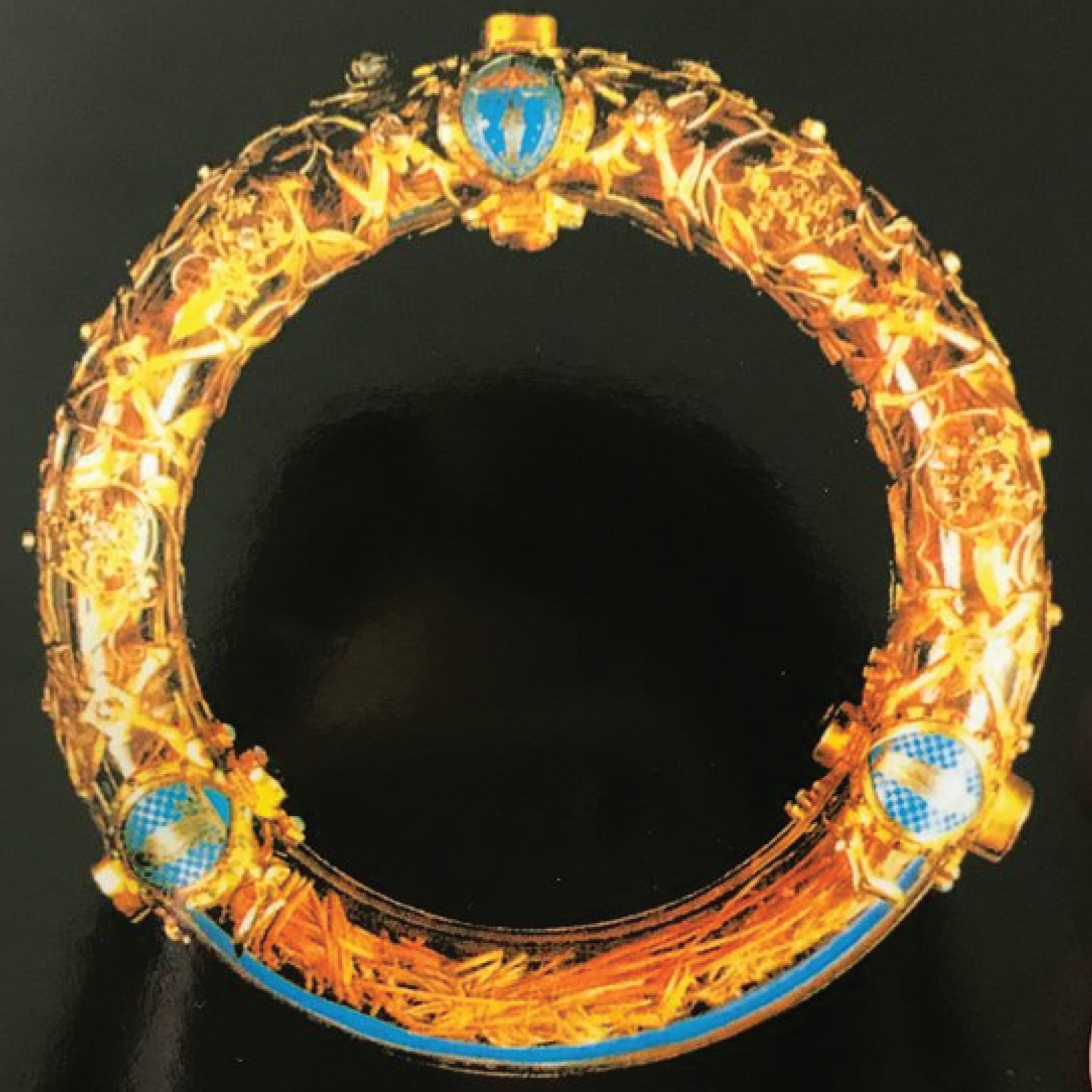 This is what is left of the Holy Crown of Thorns acquired by Louis IX. Up until the great fire of April 15, 2019, it was housed at Notre-Dame Cathedral in Paris in a container provided by Napoléon. The THORNS have been given away over the centuries, often to popes and kings.
This is what is left of the Holy Crown of Thorns acquired by Louis IX. Up until the great fire of April 15, 2019, it was housed at Notre-Dame Cathedral in Paris in a container provided by Napoléon. The THORNS have been given away over the centuries, often to popes and kings.
May God bless Père Jean-Marc Fournier, Chaplain of the Paris Firefighters, who went into the blaze at the Cathedral of Notre Dame with the firefighters on April 15, 2019 to save the Holy Crown of Thorns.
.
Priest from Tourves (in Provence) receives a Thorn from the Holy Crown of Thorns
If you spend enough time in Provence you will find Holy Treasures in many quietly held places. My new discovery this summer, just after the first Mary Magdalene Pilgrimage ended on June 19th, was to find out about the THORN relic from the Holy Crown of Thorns that was given to a priest born in the small village of Tourves in Provence.
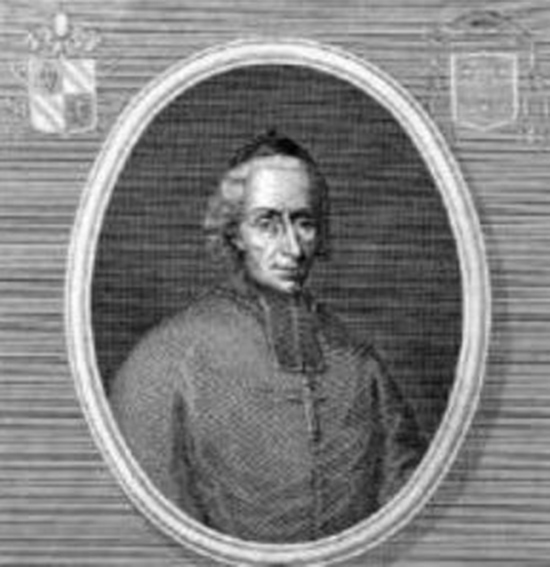 Cardinal Paul-Thérèse-David d’Astros
Cardinal Paul-Thérèse-David d’Astros
Paul-Thérèse-David d’Astros was born on October 15, 1772 in the little village of Tourves, in Provence, just 8.2 kilometers from St Maximin-la-Sainte-Baume. At the age of 24 (September 23, 1797) he was ordained a Catholic priest in Marseille.
It is important to understand what had been going on in France just after D’Astros became a priest.
.
French Revolution
1789-1799
The French Revolution initially began with attacks on church corruption and the wealth of the higher clergy. The radical revolutionaries and their supporters desired a cultural revolution that would rid the French state of all Christian influence.
The first beheadings by guillotine of the French Revolution took place in July 1789.
The French Republic was officially founded on September 22, 1792.
During the Reign of Terror (between June 1793 and the end of July 1794) there were 16,594 official death sentences in France, of which 2,639 were in Paris.
The goal during the Reign of Terror ranged from the public reclamation of the massive amounts of land, power, and money held by the Catholic Church in France to the termination of Catholic religious practice and of the religion itself.
The revolutionaries suppressed the church, abolished the Catholic monarchy, nationalized church property, exiled 30,000 priests and killed hundreds more. Their dechristianization program included:
- destruction of statues and other iconography from places of worship
- destruction of crosses, bells and other external signs of worship
- institution of the Cult of the Supreme Being as a state religion to replace Roman Catholicism
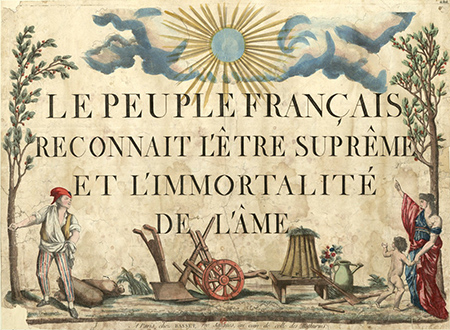 Cult of the Supreme Being
Cult of the Supreme Being
- enactment of a law on October 21, 1793 making all priests who refused to swear an oath of loyalty to the Civil Constitution of the Clergy (subordination of the Catholic Church in France to the French government) and all persons who harbored them liable to death on sight
D’Astros’ uncle on his mother’s side, Jean-Etienne-Marie Portalis, was a well know lawyer, statesman and philosopher of French Law. With the rise of Napoléon after the Reign of Terror, Napoléon chose Portalis as Minister of Worship, a cabinet member in the Government of France responsible for overseeing the French government’s relationship with religions. Napoléon was determined to restore good relations with the papacy and bring the Church back into the mainstream of French political life.
D’Astros was called by his uncle to Paris to become engaged in the formulation of the Concordat of 1801 between the First French Republic and the Holy See, where the Napoléonic regime recognized Catholicism as “the religion of the majority of French people.” But as part of the Concordat, the church gave up all claims to church lands that were taken after 1790.
But the Organic Articles (not part of the Concordat negotiations but added to the agreement by Napoléon without Pius’ knowledge) left the Curia with the feeling that they had been duped.
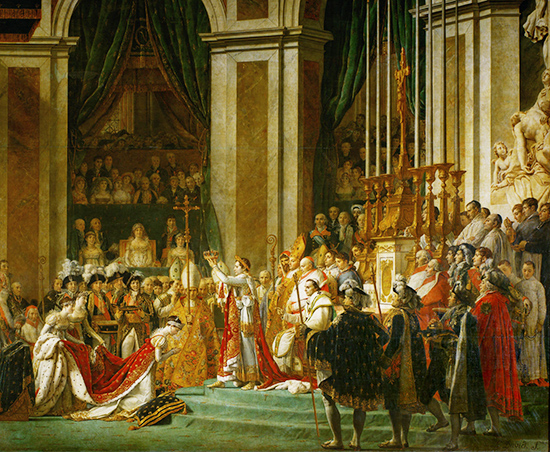 Pope Pius VII was present at Napoléon’s coronation: Napoléon turned and removed his laurel wreath and crowned himself and then crowned the kneeling Joséphine with a small crown surmounted by a cross, which he had first placed on his own head.
Pope Pius VII was present at Napoléon’s coronation: Napoléon turned and removed his laurel wreath and crowned himself and then crowned the kneeling Joséphine with a small crown surmounted by a cross, which he had first placed on his own head.
.
On December 2, 1804, Pope Pius VII was present as Napoléon crowned himself Emperor of France. By attending the coronation, Pius VII attempted to win back the lost ground and also to re-initialize the relationship. But in the end Pius VII got nowhere in the negotiations. He returned to Rome empty handed. From then on, Franco-Vatican relations slowly deteriorated. And for both men, it was the other’s fault.
Pardon & Holy Thorn for Tourves
In 1805 D’Astros was appointed Vicar General of the Archbishop of Paris, Jean-Baptiste de Belloy. Archbishop Belloy was formerly the bishop of Marseille, from 1755-1801, so he was bishop when Paul-Thérèse-David d’Astros was ordained in Marseille.
Pope Pius VII had great esteem for D’Astros, most likely because of his contribution to the Concordat of 1801. On February 28, 1805, thanks to D’Astros, the pope granted to the village and the parish of Tourves a “PARDON.”
.
PAPAL BULL
In 1808, after Belloy died, D’Astros was appointed as Apostolic Administrator of the Archdiocese of Paris by Pope Pius VII, who then named him his Vicar Capitular.
NOTE: This is not the normal procedure followed when a bishop dies and the see is vacant, rather within 8 days the cathedral chapter appoints the Vicar Capitular.
As Vicar Capitular, D’Astros received the papal bull issued by Pius VII (June 10, 1809) excommunicating Napoléon. D’Astros was later accused of having enacted the 1809 bull of Pius VII and was imprisoned from January 1811 at Vincennes until his release in 1814.
D’Astros was consecrated a bishop on July 9, 1820 in Paris and took the role of Bishop of Bayonne. In 1830 he was promoted to head the Archdiocese of Toulouse. Pope Pius IX made him cardinal on September 30, 1850, but D’Astros died a year later, on September 29, 1851 without having received his official red hat. Cardinal Paul-Thérèse-David d’Astros was buried in Saint-Etienne Cathedral of Toulouse a week later.
It was Cardinal D’Astros request as he was dying to give the Holy Thorn to the parish church of his birth in Tourves, Church of the Annonciade, where it has remained since.
These were two really immense favors for the little village of Tourves in Provence: the PARDON and the HOLY THORN.
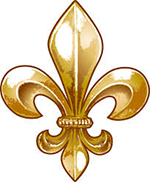

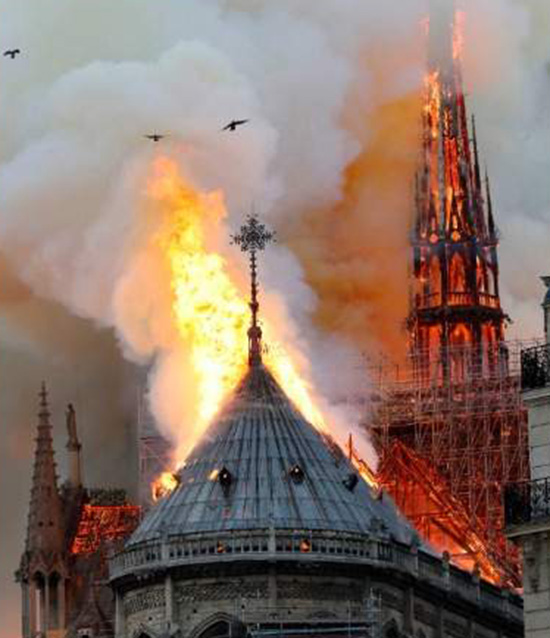

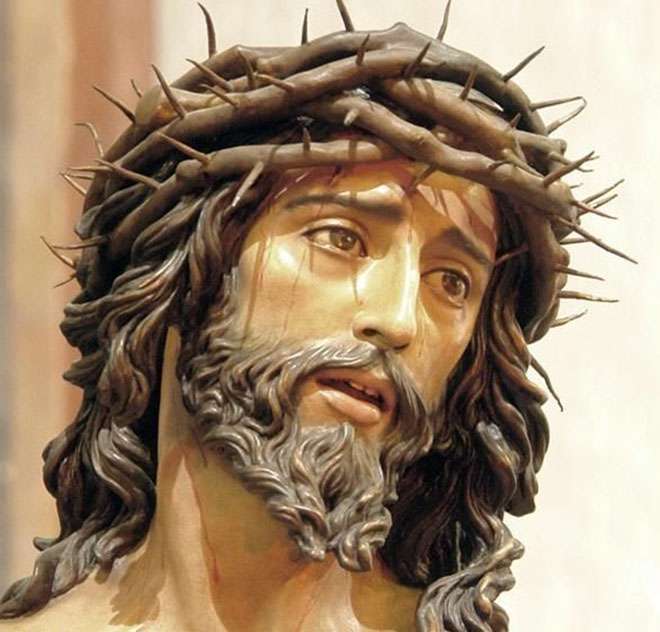

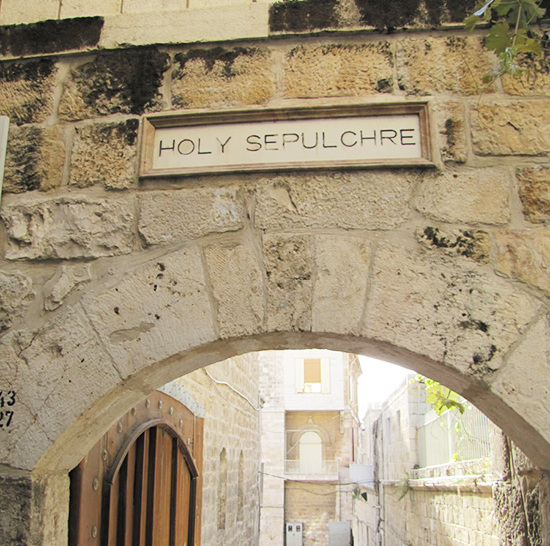
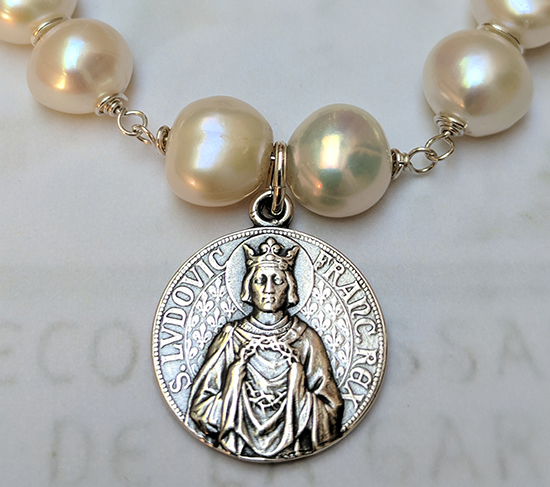
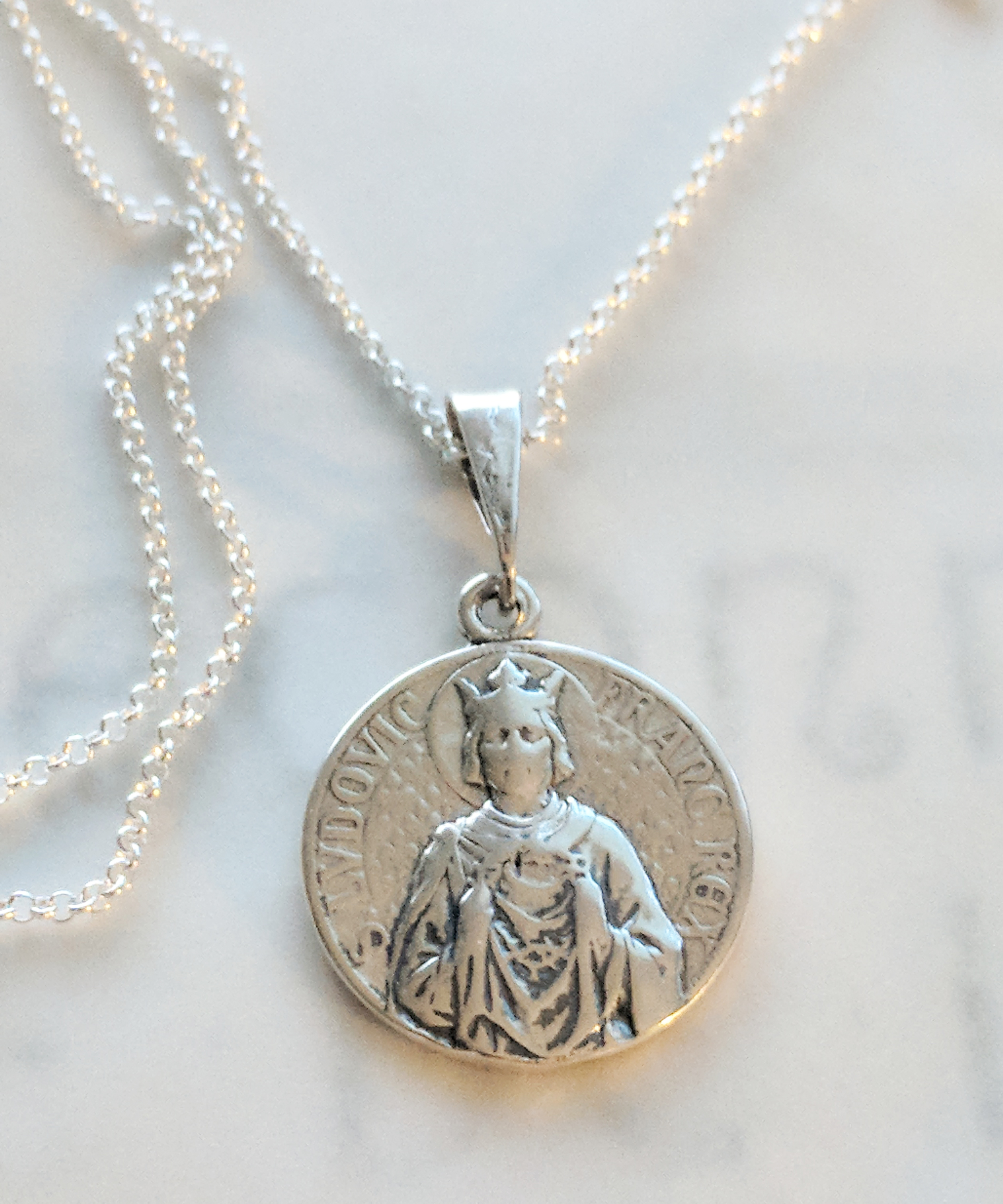
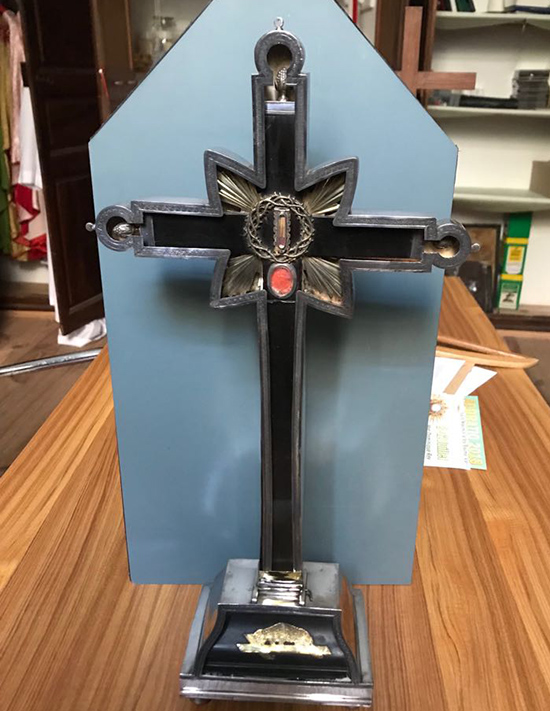
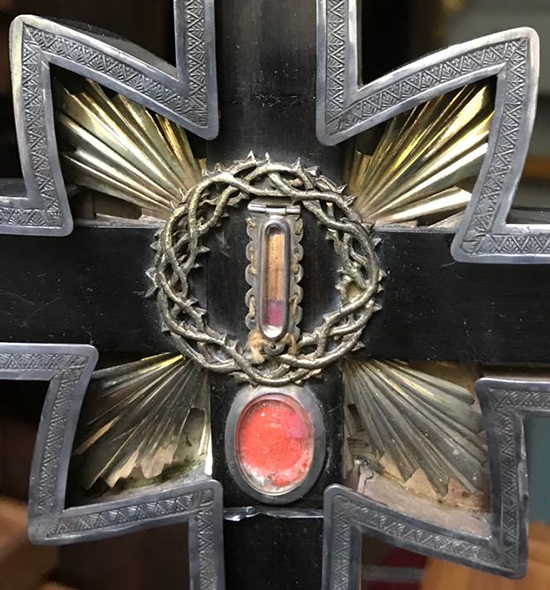
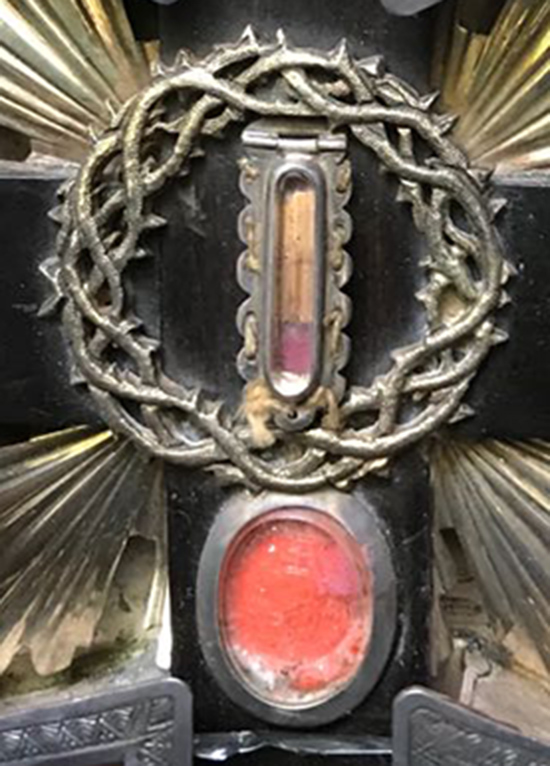
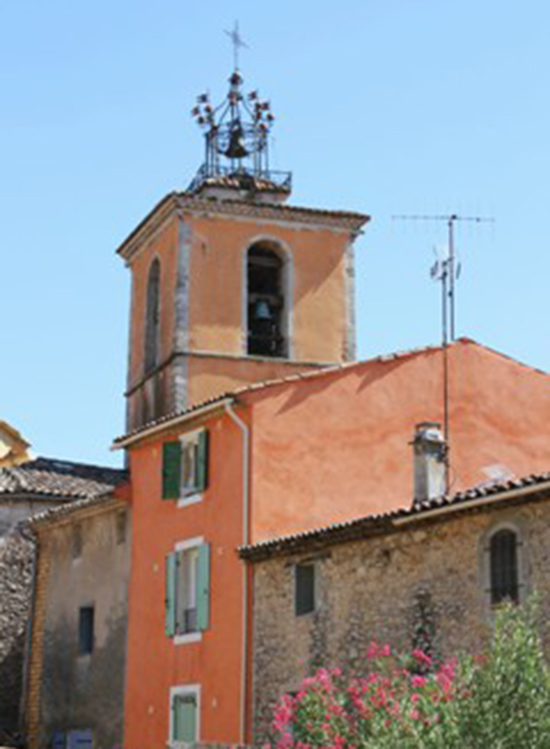

Just curious…is it known who had possession of the Crown of Thorns from the time of the crucifixion to the time it came into the possession of Saint Helena?
After a crucifixion all that was connected with the crucifixion was usually buried in the ground right where the event took place. In this case, the cross, the holy crown of thorns, the garments, etc. Probably they even normally buried the body right there too. In the case of Jesus, Joseph of Aramithea asked Pilate if he could take down the body of Jesus and bury him. Pilate first made sure he was really dead by sending Longiness to check out this fact, and to be sure, Longiness put his sword through Jesus’ side.
So in answer to your question, I don’t think anyone else was in possession of the Holy Crown of Thorns until St Helena arrived in Jerusalem and went looking for it and found it.
Thank you so much from France
I wonder where in the world is the statue of Jesus which you used to illustrate here Matthew 27:29 quote? It’s similar to one of the statues in Seville.
I guess I’ve found it. It may be from Villa de La Orotava https://cofradesviveiro.blogspot.com/2012/03/el-santisimo-cristo-de-la-salud-de-la.html
Thank you very much for this wonderful information! I did not know from where the statue of Jesus with the Holy Crown of Thorns came until now. The video of the procession with this statue is also wonderful!